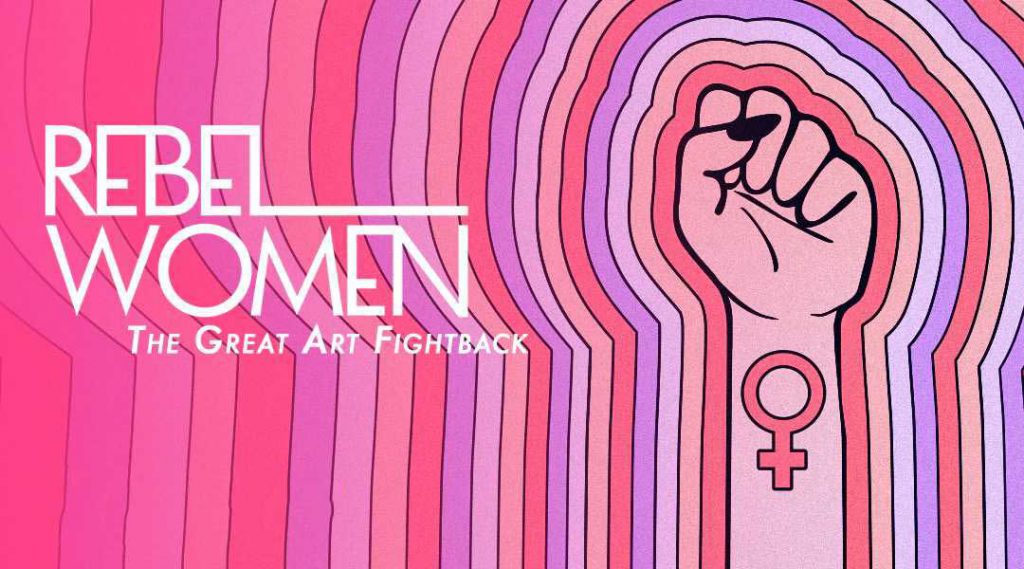Rebel Women: The Great Art Fight Back – Out of the tumult and fervour of the late 1960s emerged a generation of artists who set out to start a revolution. As women around the world joined forces to fight for liberation, the formative art movement of the last four decades was about to explode into being. On both sides of the Atlantic, women were tearing up art history and reinventing the arena of art with experimental new mediums and provocative political statements. Questioning everything from the way women were presented in magazines to the right to equal pay, female artists aimed to radically change the way women were perceived.
Mary Kelly caused outrage in the tabloids by displaying dirty nappies at the ICA, Margaret Harrison’s depiction of Hugh Hefner as a bunny girl resulted in her exhibition being shut down by the police, and in Los Angeles Judy Chicago founded the first feminist art course and told her students to only study work by women. Alongside interviews with Turner Prize winner Lubaina Himid, Suzanne Lacy, Carolee Schneemann, Rose English, Laurie Simmons and Barbara Kruger, The Great Art Fight Back tells the story of these revolutionary artists and celebrates the grit, humour and determination that wrote women back into art history for good.
Rebel Women: The Great Art Fight Back
It isn’t often that an art documentary feels like a riot, but Rebel Women: The Great Art Fightback (BBC Four) manages to convey a real sense of anarchic joy. It offers an education in the explosion of feminist art in the 1970s, at a time when female artists produced boundary-busting work that still feels radical, and certainly revolutionary.
Commissioned as part of the BBC’s Hear Her season, marking 100 years of women’s suffrage, this tells the story of women who decided not to play along with the established order. Screeching in on a soundtrack of Janis Joplin, it acknowledges that change was in the air throughout the 1960s, but takes the infamous events of Miss World 1970 as its starting point and catalyst. I wasn’t completely convinced by the idea that this particular protest was responsible for the art made by women throughout the following decade but it is as good a place to start as any and a lovely bit of archival research. To see Miss World host Bob Hope leering over the “cattle market” while feminists waved football klaxons and threw flour bombs from the crowd, to hear their brilliant chant of “we’re not beautiful, we’re not ugly, we’re angry”, is a treat for the senses.




